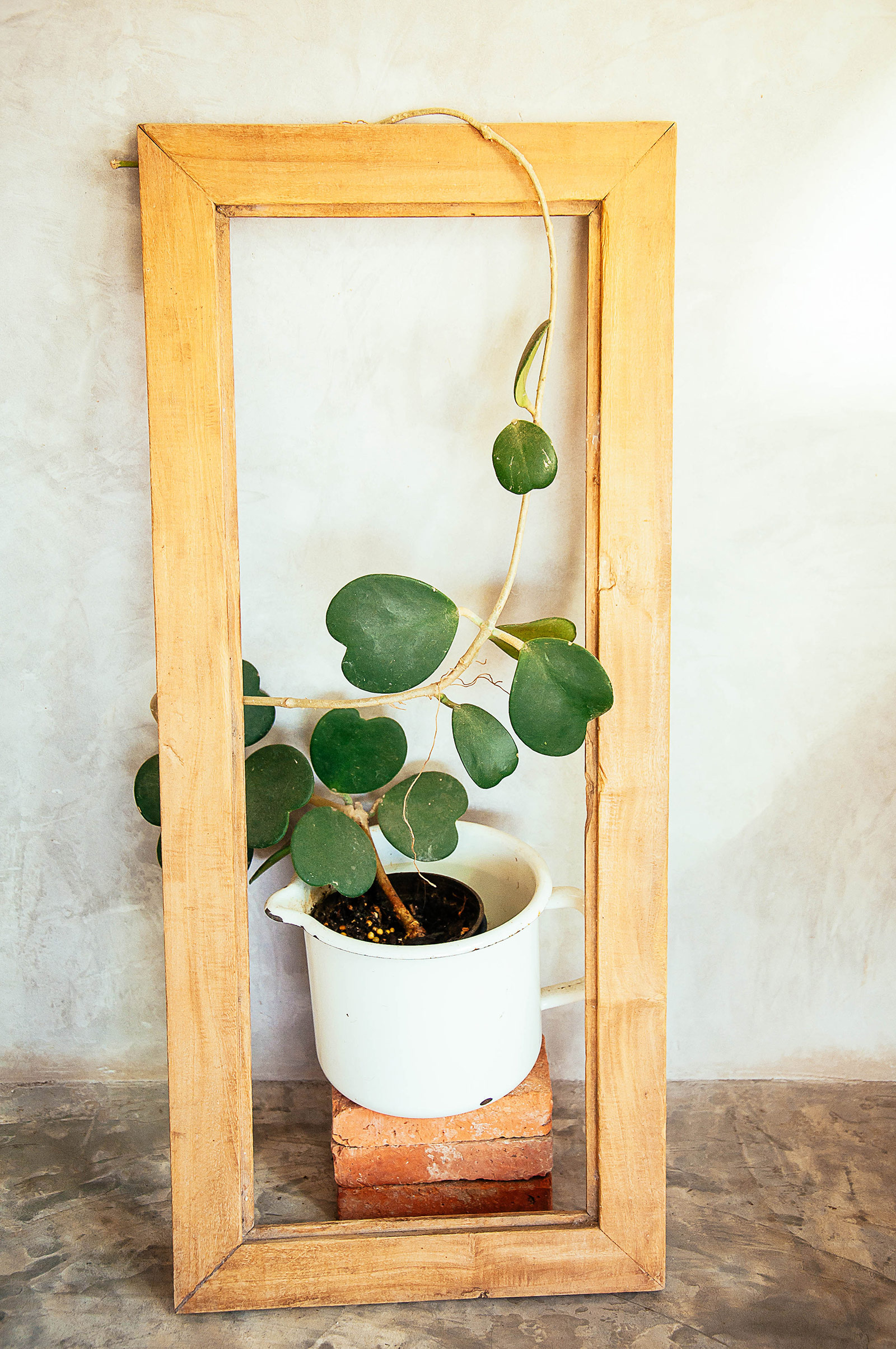A long-time Valentine’s favorite for indoor gardeners, Hoya kerrii is the sweetest houseplant around! Its heart-shaped leaves make it a joy to look at, and to make things even better, it’s also easy enough to care for that you don’t need a green thumb to keep yours alive and healthy.
Let’s go into everything you need to know about sweetheart Hoya care, whether you’ve received a single leaf or a full plant!
| Common name(s) | Heart Hoya, Hoya hearts, sweetheart Hoya, Valentine Hoya |
| Scientific name | Hoya kerrii |
| Family | Apocynaceae |
| Height and spread | Up to 13 feet high and 2 1/2 feet wide |
| Light | Full sun indoors |
| Soil type | Well-draining |
| Water | When (almost) fully dry |
Disclosure: If you shop from my article or make a purchase through one of my links, I may receive commissions on some of the products I recommend.
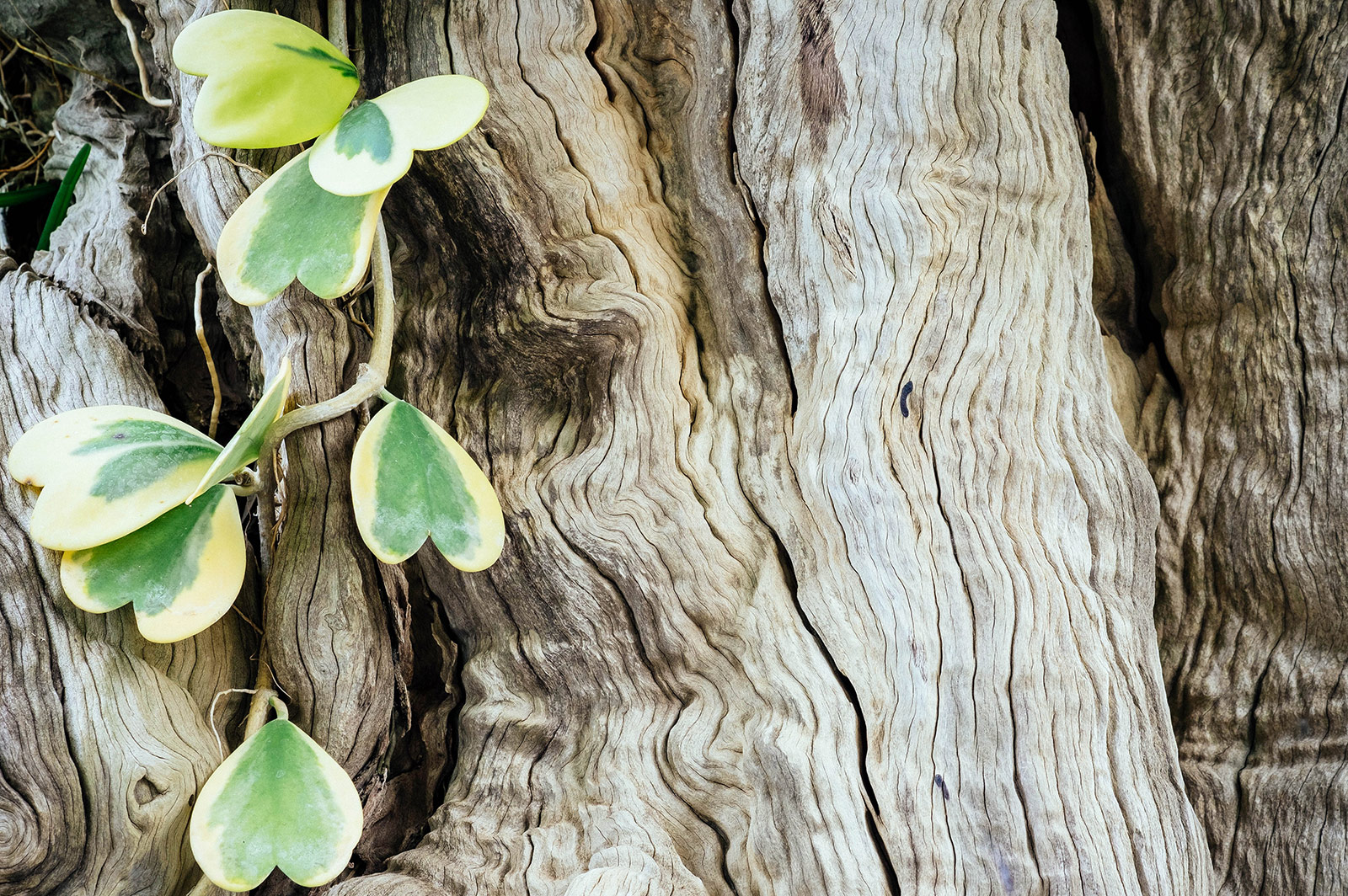
About Hoya kerrii
Natural habitat
Heart Hoya is naturally found in Southeast Asia, specifically Cambodia, Laos, Thailand, Malaysia, and the Indonesian island of Java. It’s also listed as an introduced species in some parts of southern China. Here, it occurs in tropical rainforests.
I had a little trouble finding specifics about this species’ habitat, but a 1911 horticultural bulletin does describe that the first specimen known to the Western world was collected by botanist Arthur Francis George Kerr, which explains the plant’s scientific name. He stumbled upon it in a mountainous jungle region in the province of Chiang Mai, Northern Thailand.
Description
Like many other Hoya species—many of which are popular as houseplants, such as Hoya carnosa—Hoya kerrii is a vining epiphyte. This means that in its natural habitat, it grows in a climbing manner, using taller trees as support. (Other vining epiphytes you might know as houseplants include Peperomia prostrata, Syngonium podophyllum, and Monstera deliciosa.)
Read more: These beautiful Hoya varieties are perfect for beginners
The species is not necessarily officially considered a succulent, but it’s definitely succulent-like, with fleshy leaves that have the capacity to store a good bit of water. It’s a slow grower and perfect for a hanging planter or to guide up a trellis.
The reason the sweetheart Hoya is such a favorite among houseplant enthusiasts is, of course, the shape of its waxy leaves. Two-lobed, they look just like perfect little hearts!
Don’t overlook the blooms either, because as in other Hoyas, those are pretty spectacular as well. Inflorescences occur in clusters of up to 25 flowers and are especially fascinating up close. The flower base is creamy white and slightly fuzzy, with a perfect reddish-purple star in the middle that can produce round droplets of caramel-colored nectar from its tips. They release a faint, sweet-smelling fragrance.
Cultural significance
It’s not that easy to find a full Hoya vine for sale, even in specialized plant stores. If you do find them, they’re often quite expensive. What does pop up without fail around Valentine’s Day are single Hoya leaves rooted and maintained grown in small pots. Some are sold with a message or image painted on them.
Aside from its romantic significance, Hoya kerrii has also long been used as a folk remedy in the areas it’s naturally found in. It’s said to aid in curing diabetes, the sap can supposedly help heal wounds, and the plant is even used to treat rheumatoid arthritis through ingestion.
I also found one source (this 2020 research paper) that mentions the leaves are considered an edible herb and sometimes stir-fried and eaten in Thailand.
Related: You grow these common vegetables and didn’t know you could eat them
Not saying you should try any of it at home, but it’s fascinating how many species we view only as houseplants actually have long histories of being used for other purposes in their homelands!
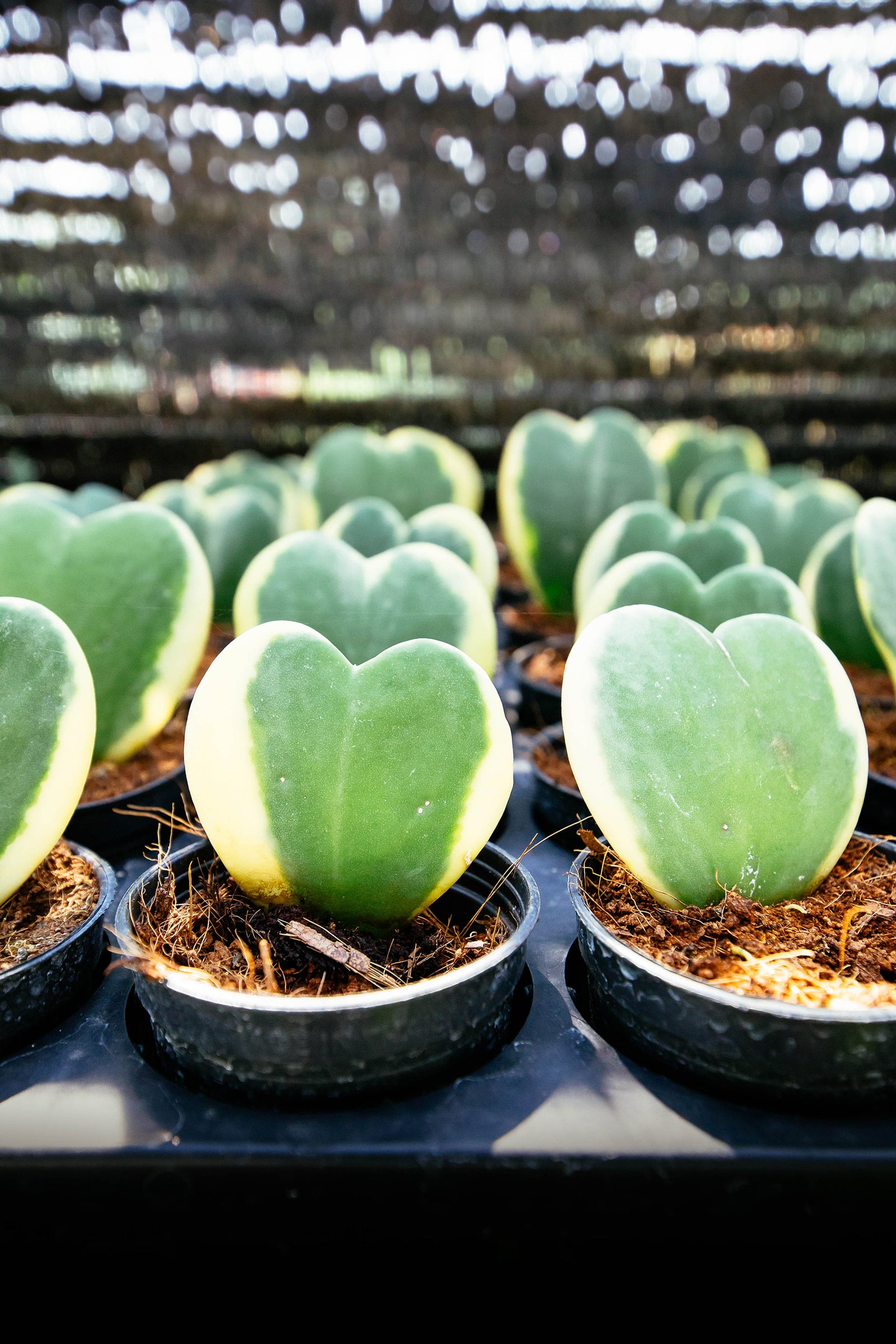
Hoya kerrii varieties
Sweetheart Hoyas are sold in two different growth forms, and yes, you’ll find the difference does matter. There are also a few different cultivars available, although you’ll most commonly find the normal, dark green version for sale.
- Hoya kerrii heart: The typical single potted Hoya leaf you’ll find in stores around Valentine’s Day. As discussed in the FAQ section at the end of this post, it won’t grow, but it can survive for years. Perfect if you want something alive but small.
- Hoya kerrii vine: If you actually want your sweetheart Hoya to grow, this is what you’re after, but they’re hard to find! I guess this may have something to do with their slow growth.
- Variegated Hoya kerrii: Normal emerald green leaf center, but with mottled creamy yellow at the edges. If you give it a lot of light, it can produce leaves that are almost entirely yellow!
- Reverse variegated Hoya kerrii: Rather than being confined to the edges, the yellow variegation shows at the center of the leaf.
- Hoya kerrii ‘Splash’: Another variegated cultivar, but with silvery speckling all over the leaves rather than large yellow blocks.
- Hoya kerrii ‘Fuzzy Leaves’: I’ve never actually seen one of these, but apparently it has velvety rather than smooth, waxy foliage.
Where to buy
Hoya kerrii plants
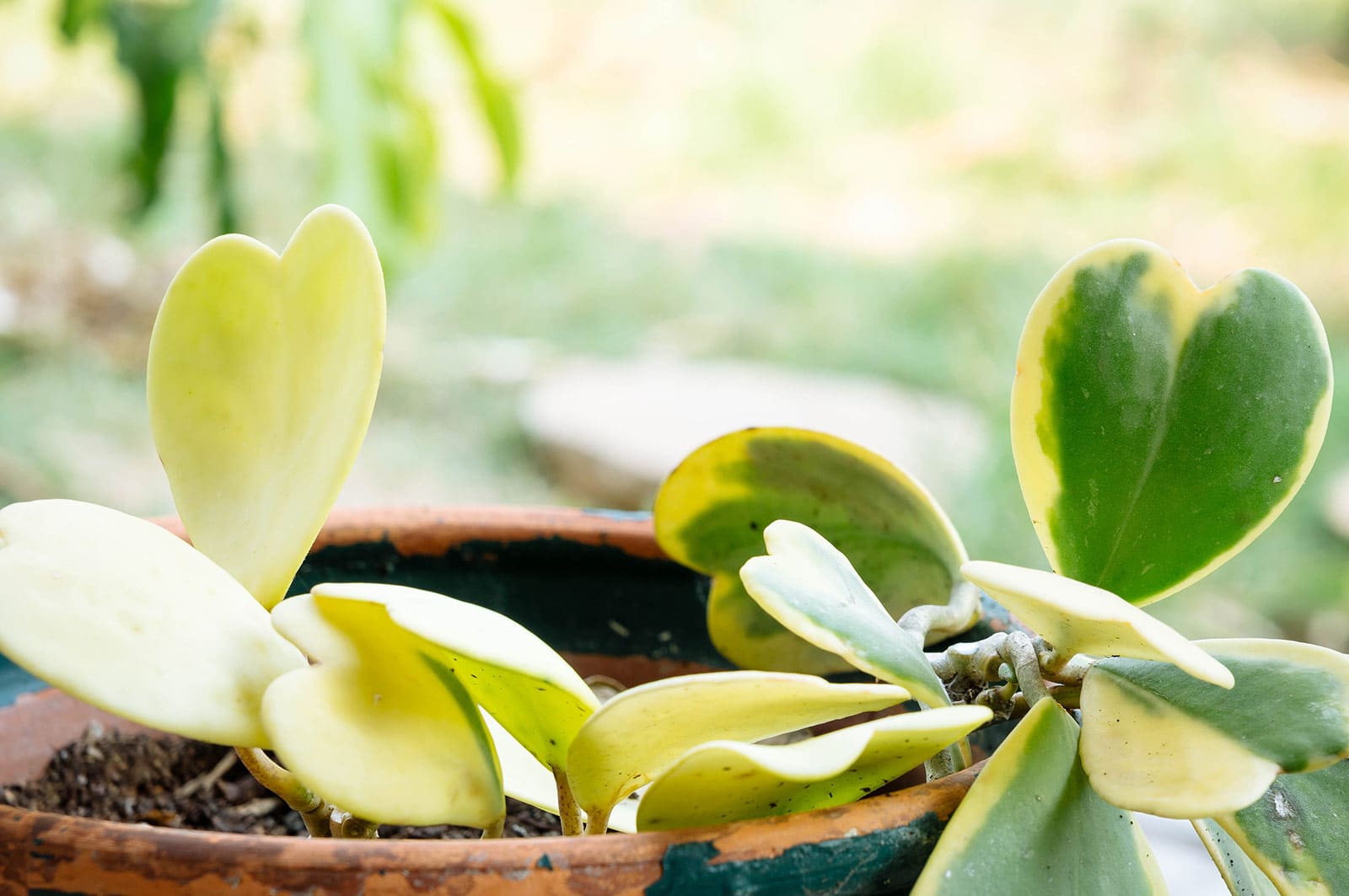
Caring for Hoya kerrii
Light and temperature
Wild sweetheart Hoya plants use tree trunks as a means to climb upward and get as much sunlight as they can, so it’s not surprising that yours will appreciate full sun indoors. Treat it like a succulent and give it a spot on the sunniest windowsill you have to offer! Just be sure to acclimate it slowly if it came from a dimly lit plant store, just to avoid the risk of shocking it.
In a dark location, your Hoya kerrii will barely grow. Variegated varieties may revert to green in order to attempt to photosynthesize more effectively, losing their charm.
Temperature-wise, this is a typical tropical. Southeast Asian jungles are hot! It should do perfectly fine at room temperature and higher temps won’t be a problem either.
Just don’t let things get too chilly: Keep your sweetheart Hoya away from drafty windows and A/C units to prevent things dropping below 59°F.
Water and humidity
In terms of watering, Hoya kerrii behaves like a typical succulent. In terms of humidity, it does not!
Let me explain: Because this plant naturally grows in trees as an epiphyte, it isn’t used to its roots being trapped in constantly moist soil. It absorbs what it needs and stores it in its fleshy leaves to sustain itself. However, it is also a rainforest plant, meaning it has evolved to become used to very high air humidity.
You can water your heart Hoya once its soil has gone almost fully dry. It’ll usually need a drink once or twice a week in summer and every two weeks or so in winter. Just stick your finger in the soil if you’re not sure about the moisture level, in order to avoid overwatering by accident. If in doubt, give things a day or two more, as it’s better to water too little than too much.
As for humidity, that should ideally be above 50 percent year-round. The plant will likely survive fine at lower levels, but its already slow growth can decelerate to a positively glacial pace. Since these air moisture levels are not something achievable in our homes in many areas, especially during the winter months, it can be handy to invest in a humidifier. All your tropical houseplants will appreciate it, not just your Hoya kerrii!
Soil and planting
Because it’s a succulent-like epiphyte, Hoya kerrii really doesn’t appreciate its roots being choked in dense, wet soil. Instead, you should plant it in a light medium that allows excess water to drain easily, as well as the formation of plenty of air pockets.
It doesn’t have to be anything overly complicated: 60 percent normal potting soil mixed with 20 percent perlite and 20 percent fine orchid bark should be absolutely fine.
The exception would be if you have a single leaf Hoya rather than a vine, which are usually planted in more nutrient-rich soils.
When it comes to containers, the choice is all yours. As long as your preferred planter has a drainage hole in the bottom, it should work fine. Hoya vines are often grown in hanging pots, but I personally prefer to go for the more natural option of trailing it up a trellis or moss pole. A solo leaf does fine in any basic small pot you’ve got on hand.
Recommend products for Hoya kerrii plant care:
- Soil Sunrise Philodendron Houseplant Potting Soil
- Good Earth Organics Premium Potting Soil
- Perfect Plants Organic Perlite
- Better-Gro Orchid Bark
- Totem Monkey Extendable Coir Moss Poles
Fertilizing
Slow growers like this one don’t require too much fertilizer to thrive. In fact, as with watering, it’s better to underfertilize than overdo it! Excess nutrients can damage your Hoya kerrii’s roots.
I use a balanced liquid houseplant fertilizer, diluted to half-strength or less, around once a month during the spring and summer growing season. The rest of the year I just leave my Hoya kerrii vine alone. In the case of a single leaf, which can’t grow anyway, I’d probably only fertilize twice a year or so.
Recommended fertilizers for Hoya kerrii:
- Houseplant Resource Center Liquid Fertilizer for Houseplants
- Instant Biologics Instant Plant Food (Fizzing Nutrient Tablets)
- Maxsea All-Purpose Seaweed Plant Food
Pruning
As with the majority of houseplants, you don’t really have to do any pruning on your Hoya kerrii. Just remove any dead foliage and you’re good to go. You may have to reattach new growth regularly if you use a trellis though.
Dividing or repotting
This is not a houseplant you’ll end up dividing unless it gets very old and tangled. It doesn’t really tend to produce side shoots, so simply repotting is the way to go. You can repot once your heart Hoya outgrows its planter, or every two years or so to give it some fresh soil. Repotting is best done during spring.
Hoya hearts will never need a larger planter than the one they came in, but they, too, appreciate some new soil once in a while.
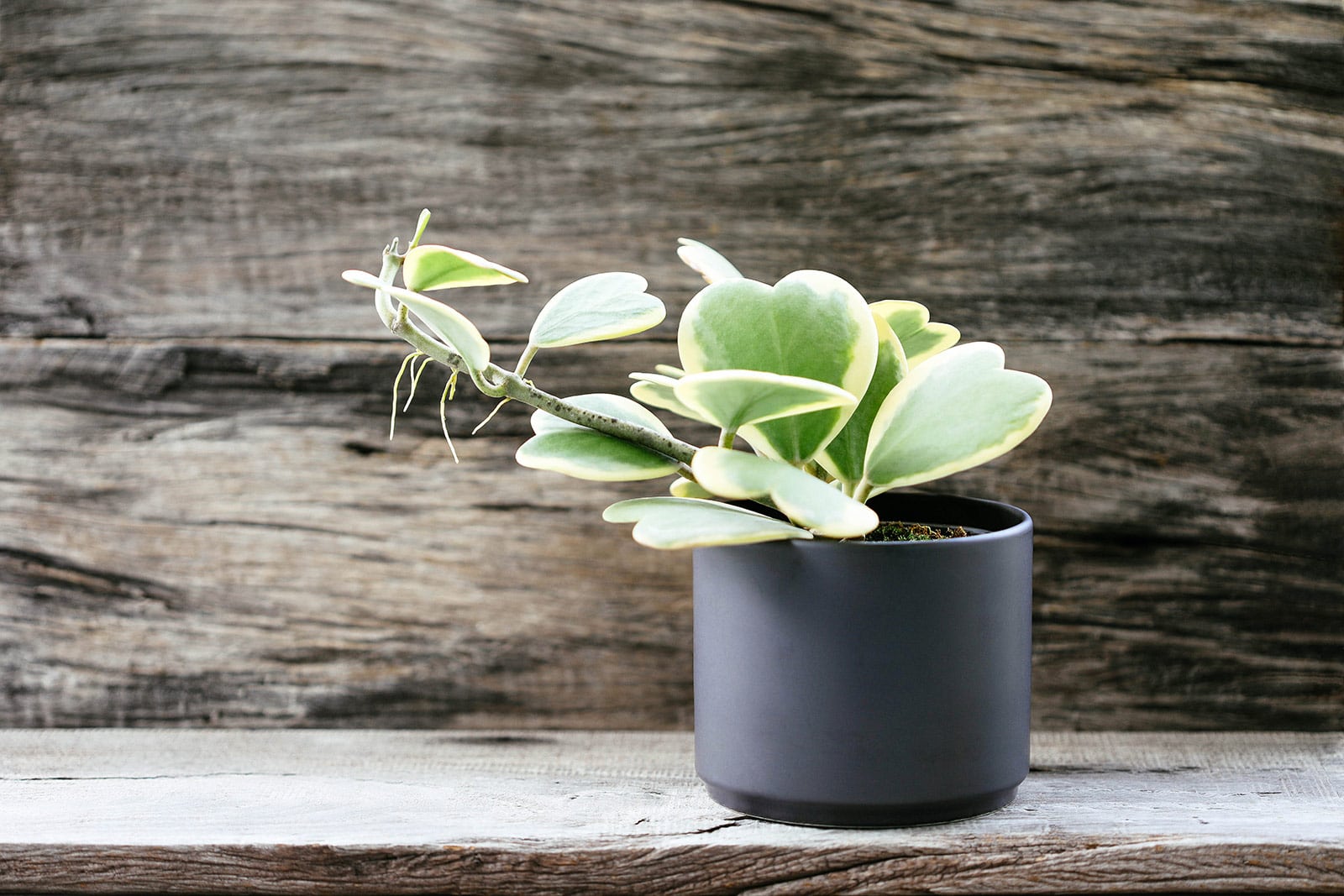
Propagating Hoya kerrii
Propagating a sweetheart Hoya is not difficult, although it’s an activity for the more patient among us since it can take a good while for the first roots to start popping up. You’ll have to take stem cuttings; leaf-only cuttings won’t grow, as they don’t have a node for roots or new foliage to sprout from.
The easiest way to obtain a cutting is to just cut pieces of stem that are at least around 4 inches in length and have a few leaves. Then, you can either set the cutting in a glass of water (don’t submerge any leaves!) or dip it in rooting hormone and then plant it in damp sphagnum moss.
Whichever option you go for, place the whole thing in a warm and brightly lit (but not sunny) location and be prepared to wait a few months for it to root.
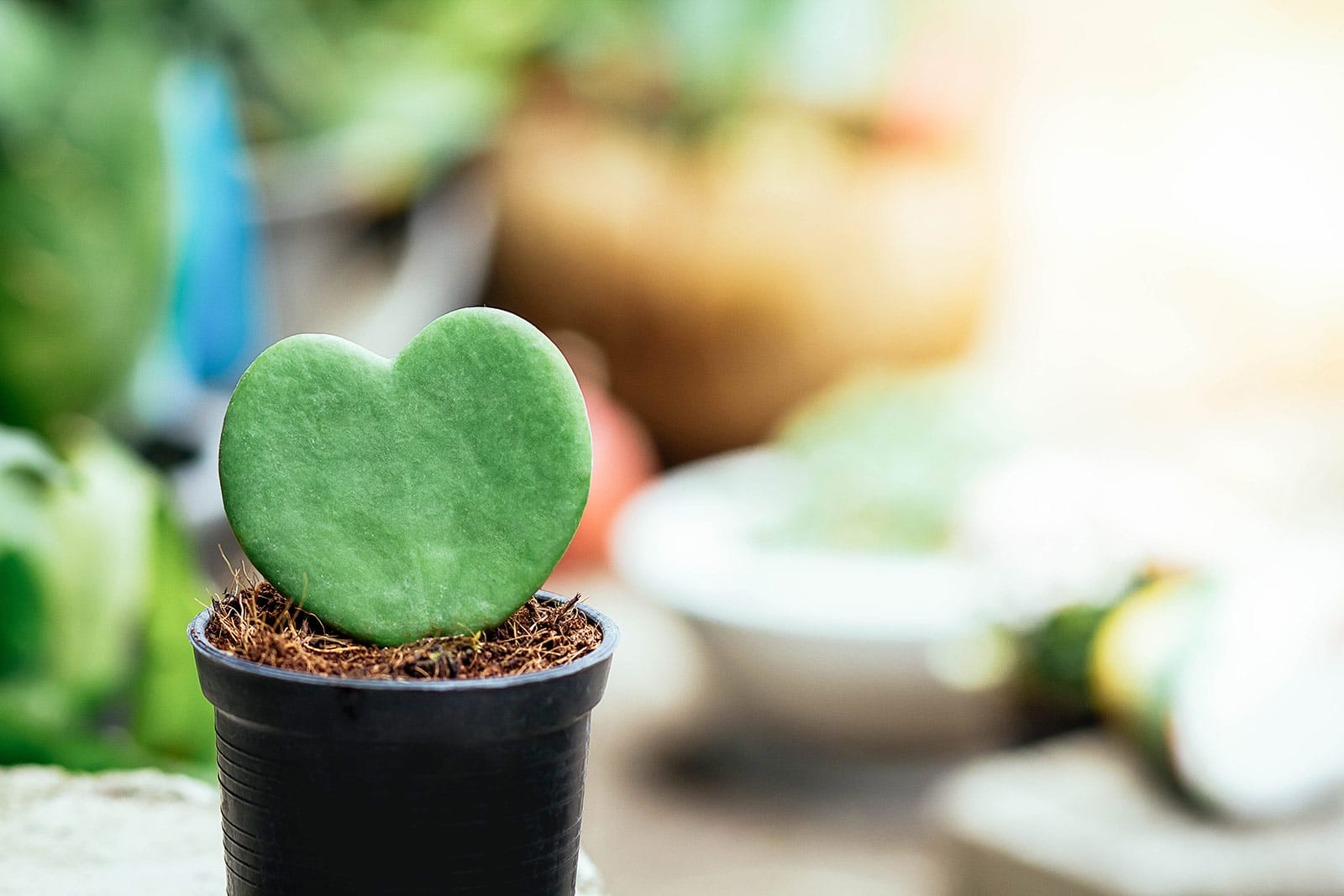
Will a single leaf Hoya kerrii grow?
Isn’t that the age-old question! The short answer is: probably not. Don’t count on it, in any case.
The long answer: As you’ve read in the section above on propagating Hoya kerrii, you’ll need a cutting with a node (growth point) if you’d like to propagate your plant. They’re not like succulents, which can be turned into a whole new plant using just a leaf.
Most of the single Hoya leaves found for sale lack a node, meaning they have the capability to root and survive for years, but will never grow.
There are occasional exceptions where houseplant enthusiasts maintained their single sweetheart Hoya leaf for years and suddenly found it sprouting a new vine. These are cases where the nursery accidentally included a bit of stem with a node in the leaf cutting.
It can take absolute ages for that node to become active (and it may actually never do anything), but it is technically possible.
Is Hoya kerrii toxic to cats and dogs?
There is actually some discussion on the topic. Most sources, including the ASPCA, list the sweetheart Hoya as safe for animals. Others list it as toxic due to its milky white sap. Given the fact that folks in Southeast Asia traditionally ingest this plant, I’m going to go with it being safe.
Sources:
- https://powo.science.kew.org/taxon/urn:lsid:ipni.org:names:98512-1
- https://www.biodiversitylibrary.org/item/43464#page/438/mode/1up
- http://www.phargarden.com/main.php?action=viewpage&pid=50
- Sittisart, P., Dunkhunthod, B., & Chuea-nongthon, C. (2020). Antioxidant and Anti-inflammatory Activities of Ethanolic Extract from Hoya kerrii Craib. CHIANG MAI JOURNAL OF SCIENCE, 47(5), 912-925.


